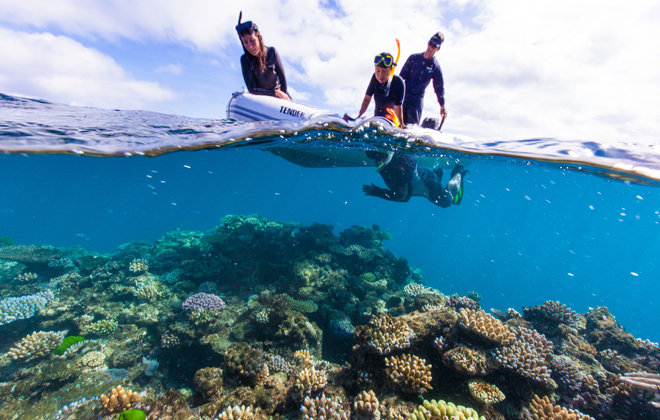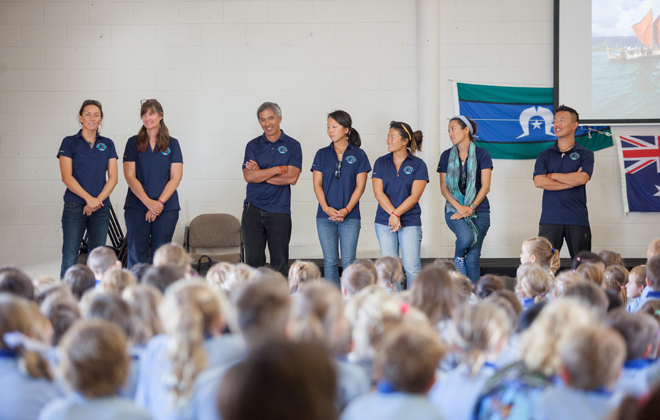Hokule’a crews head underwater to explore the Great Barrier Reef

Hokule‘a crew members prepare to survey the Great Barrier Reef in Australia, above.

Nainoa Thompson, center, and other Hokule‘a crew members address a group in Australia.

Voyagers dive on Great Barrier Reef to showcase the fragile natural wonder



With Hokule‘a’s recent arrival in Australia, the canoe’s crew members are once again taking their round-the-world voyage underwater.
Accompanied by cameramen and researchers, they dived the Great Barrier Reef five times in the past two weeks to help showcase one of the world’s most diverse natural wonders.
Crews explored the Lodestone, Upolu and Flynn parts of the massive reef complex, which stretches well more than 1,000 miles along Australia’s eastern coast. During those trips, the crew combined "scientific and indigenous perspectives" and met with locals who are passionate about protecting the reef, according to a release from the Polynesian Voyaging Society. The group is organizing the canoe’s Malama Honua ("Care for the Earth") worldwide journey.
"The reefs that we dove on look quite good, to be honest," said University of Hawaii researcher Ruth Gates, who joined the diving expeditions about 30 miles offshore from Cairns. Gates studies coral from a university facility on Coconut Island in Kaneohe Bay, and she has spent the past several years scrambling to find the hardiest, strongest coral — the "professional athletes" of the bunch — that can endure the warmer and more acidic seas of the future.
"It’s very colorful — many small and large fish," along with sharks and rays, Gates said Friday of the Great Barrier Reef.
The more than 300 coral species at the Great Barrier Reef, which is far offshore, are also doing better than the coral found back at Kaneohe Bay, which face constant stress from human activity right along the shoreline, Gates said.
Don't miss out on what's happening!
Stay in touch with breaking news, as it happens, conveniently in your email inbox. It's FREE!
But that’s not to say the Great Barrier Reef is immune to human activities, she added.
"With all reefs globally, they’re all susceptible to climate change" and its more erratic temperature spikes, which can cause coral bleaching events, Gates said.
In Townsville, Hokule‘a docked behind the Reef HQ Aquarium, which hosted a virtual underwater field trip during the canoe’s stay there. Using Google Hangouts, a diver at the Great Barrier Reef led students in New Zealand and young PVS members on a tour of the marine life there.
Hokule‘a crews have previously dived other mostly pristine reef destinations during their Malama Honua journey, including federally protected Fagatele Bay in American Samoa last fall, where they aimed to raise awareness of coral ecosystems’ importance. They had also hoped to make it to a marine preserve in the Phoenix Islands last year, but the wind didn’t allow them to make the journey several hundred miles north of Samoa.
Hokule‘a is slated next to sail to Cooktown, then through the Torres Strait and across the top end of Australia to Darwin — its final port on that continent, according to the release. It’s slated to then sail on to Indonesia.
Hokule‘a is accompanied by the sailboat Gershon II.




